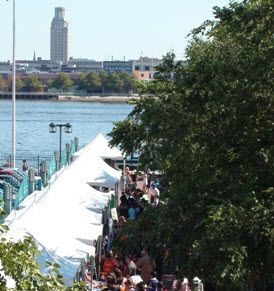Beautiful Pawtuckaway faced with milfoil challenges
By Amy Miller
It was an exquisite day at Pawtuckaway State Park. I was circling Horse Island by kayak with my son, my third time paddling since waking that morning on the shores of Pawtuckaway Lake. Earlier I had come across a single loon, happily swimming past my oar. Now, as the woven gold sunset intensified behind the hills of southeastern New Hampshire, we came across a family of five loons all drifting calmly toward their nighttime concert. We also, less pleasingly, came across signs warning us of “Exotic Milfoil Spread.”
Back on land, I checked out what was going on with this invasive plant that chokes natural vegetation in ponds and lakes across New England. Turns out Pawtuckaway had been free of this harmful intruder until last year. At that point, a small clump of milfoil was seen between the campsites of Horse Island and the houses across the inlet.
Pawtuckaway State Park is a jewel tucked into the countryside just a short drive from many large population centers. On any sunny weekend in summer, Pawtuckaway’s small beach is packed to capacity with people barbecuing, swimming, boating or just plain hanging out with their families. The much quieter campground down the road is likely to have every one of its 195 sites filled and its dirt roads bustling with youthful bikers spinning their wheels until it’s time for s’mores.
 Pawtuckaway Lake is a 784-acre body of water in the Lamprey River Watershed. For years it has battled periodic bacteria overload from geese, development and general runoff. But until last year’s infestation, milfoil has not been a problem.
Pawtuckaway Lake is a 784-acre body of water in the Lamprey River Watershed. For years it has battled periodic bacteria overload from geese, development and general runoff. But until last year’s infestation, milfoil has not been a problem.
Unfortunately, efforts to get rid of the milfoil last year were not successful. Despite divers from the state Department of Environmental Protection removing the plants, the milfoil was back to the same spot this year, and even more widespread.
Fortunately, the lake has devoted friends. The Pawtuckaway Lake Improvement Association, which samples and monitors the water, has been teaching volunteers how to look for and even eliminate the intruder. When the environmental organization noticed last year that there was some milfoil in the South Channel of the lake, they began an inspection and education program.
Because the plant grows so rapidly and easily, the association is pleading for residents to carefully inspect their boats. Volunteer and paid Lake Hosts are trained to inspect boats entering the water and training materials can be found as well at at the NH Lakes web page.
To protect Pawtuckaway before it is too late, the association has asked residents to take a few particular steps like cleaning, draining and drying boats that have been in other waterways. A picture on the association web page shows bushy branches and leaves that are unnaturally bright green, especially the younger plants. 
But unless it is a floating fragment, the association recommends boaters leave it in place and report the finding to them. Floating plant fragments can be removed and disposed of in zip lock bags. The association also asked homeowners to check the lake bottom as far from shore as possible and as often as possible, especially on sunny, calm days when visibility is good. And residents willing to do a bit extra are invited to train as weed watchers.
The markers my son and I saw were there to outline where the milfoil was found. All boating, paddling or swimming was discouraged in that area. Even small pieces of milfoil that break off from the larger plants can drift and easily take root, quickly overwhelming a water body, making water activities impossible.
Luckily, my son and I turned around when we saw the sign, there to help protect the waters from any further spread of milfoil.
-30-
Amy Miller works in the office of public affairs at EPA New England.
https://nhlakes.org/education/lake-host/



